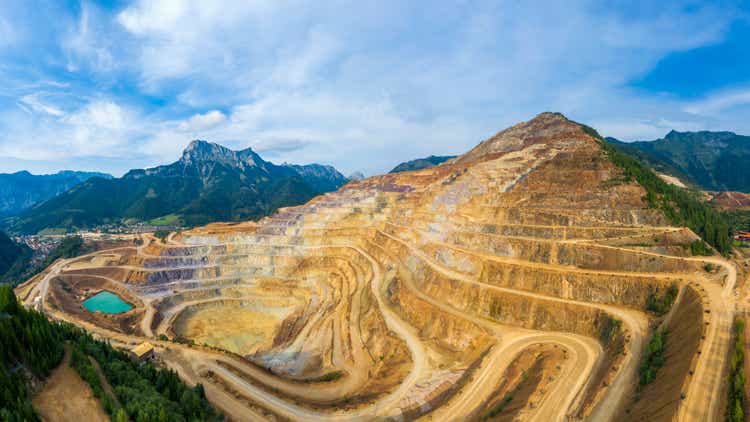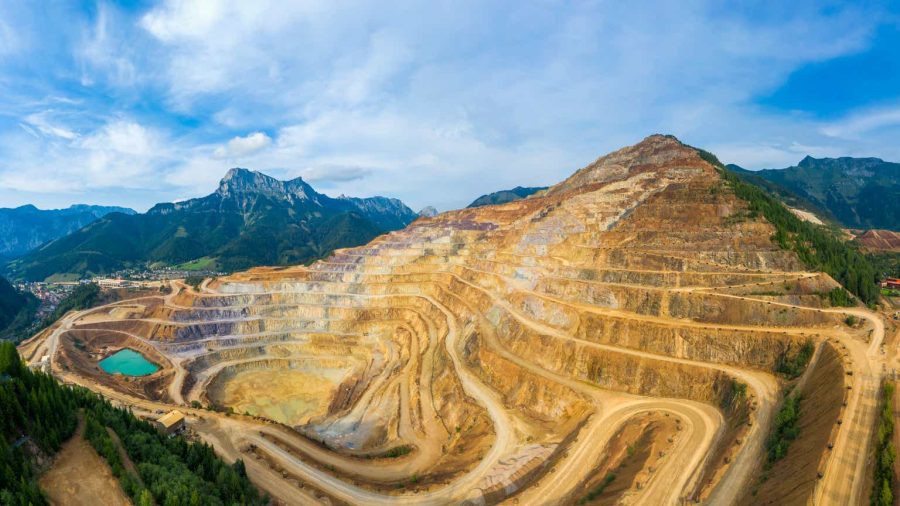Summary:
- Hycroft is a great story and I like good stories.
- Bombed out mine to meme stock to AMC investment and then…
- Well, that’s the thing, isn’t it, what comes next?
DieterMeyrl/E+ via Getty Images
It is a great story
Hycroft Mining (NASDAQ:HYMC) has been a grand little story just recently. There’s definitely been some excitement in the stock and the reason why is almost a fairy tale of how weird things can happen in stock markets.
However, the end of the tale is what matters – of course it is – and there the jury is still out. This piece is not going to try to divine what the end is going to be. Rather, it’s going to lay out what the problem was, how it has potentially been solved and then leave you, the reader, to fill in the blank of what the end of the story might be. I’m not – because I don’t know it – going to predict that end, but you will be better informed at the end of this.
The old problem
Just when folk first started getting interested in March I wrote elsewhere about Hycroft. The stock had just jumped 200% and there was some thought that it was about to become another meme stock. Lots of speculative interest which could lead to fun times and possibly even stonks.
The basic problem was described by the company itself. There’s a mine, it has gold and silver in it. It’s not some massive Tier 1 deposit, but it’s a perfectly respectable little deposit that could well be worth mining. The actual problem is that they’ve not got a processing plant there. This makes their activities uneconomic. The solution is to build a processing plant but they didn’t have the capital to do that, nor any real prospect of doing so.
A bit of tech here
So, when you go mining there are different techniques dependent upon what you’re trying to pull out of the ground. Mineral sands operations are different from hard rock and so on. It’s entirely possible that you’ve got to move a ton of rock to gain a gram of something – that’s not uncommon with gold in fact.
Just digging isn’t enough is another way of putting it. You’ve got to process the desired element or mineral out of the general rock. Again, there are different ways of doing this, even different ways the same element can be extracted.
The thing about gold is that concentrations in the host rock are usually pretty small. Those grams per ton. Sometimes we’ll find a quartz vein, the gold being concentrated in that, and it’s possible to hand mine just the quartz and so extract the gold. Historically that has been true at least, but near all such deposits are now mined out. What is much more common these days is – just as an example – that we’ve still got quartz containing gold, but not so much in a vein but spread through the rock itself. So the rock must be crushed to liberate the quartz from which we can then extract the gold.
Note that this isn’t a description of the Hycroft geology, it’s just an example of the problem.
So, here comes the specific Hycroft problem. They didn’t have a processing plant to liberate the gold and silver containing minerals from the surrounding rock. The whole pile of rock had to be transported offsite to such a processing plant. The transport costs were such that this meant no profit could be made.
The solution is to build the processing plant onsite. Then transport costs only apply to the actual ore, not all the surrounding rock (what is called “gangue”).
Hycroft’s problem
The analysis of what was wrong is not just simple, the company itself had it right. For all of that above is taken from their own explanations. So, if it’s this simple – build an onsite processing plant – then why didn’t they do that?
Their problem was that the capital structure of the company simply didn’t allow it. The market capitalization was in the tens of millions, they’d need a couple of hundred million to solve this problem. They were already gaining waivers from creditors on some loans and so on. They simply weren’t worth enough to be able to issue stock to solve the problem.
The combination of needing capital and not being able to raise it put them into a corner which it wasn’t obvious they could get out of.
Then came
Then came, at first at least, that little burst of activity about possibly being a meme stock. The hope seemed to be – on the bulletin boards and so on – that given the short interest it might be possible to create a short squeeze in what was, after all, a microcap.
That could have worked but only if the short positions had been much larger. Sure, there were shorts – Hycroft didn’t really have any way out, recall – but it wasn’t like GameStop where there seemed to be more short positions than there were free float.
What happened next is of course AMC – that other meme stock – investing in Hycroft. This seems very odd indeed, a movie complex company investing in a gold mine. But AMC’s own experience as a meme stock had led to it having excess capital. Using one’s own excess capital to solve a capital shortage elsewhere – for a price of course – is sensible investing.
Now that the price had moved up it was possible then to complete the capital raise at a price that wasn’t so hugely dilutive. And so was Hycroft saved.
Or at least that’s one way of reading the story. That now Hycroft has the capital necessary they can build the processing plant, they can resume mining and everything will be fantabulous.
This is where the problem is now
What we don’t in fact know is whether Hycroft is going to use this new capital properly and successfully. There are those who think – from the AMC point of view perhaps – this is a horror story. This doesn’t look good to me either: ” “Our strengthened balance sheet allows us to reduce our debt, complete our technical studies and launch a robust exploration program to capitalize on recent exploration results,” President and CEO Diane Garrett said. “
Umm, no, more exploration isn’t the point. Building that processing plant so as to make current production viable is.
My view
The original definition of the problem – recall this comes from the company itself – was that lack of local processing and the resultant transport costs. They’ve now got the capital to solve that problem. If they use the capital to try to do other things then I’m bearish. If they actually solve their base problem then Hycroft becomes a perfectly acceptable, if not hugely exciting, gold and silver miner. The second of those is preferable.
The investor view
An influx of capital can cause executive minds to focus on possibly the wrong things. The test of the future value depends, I think, on whether they build that local processing or not. If they do then their current mine becomes profitable and that will be reflected in the stock price. That’s therefore the thing to look for.
This ends up being rather boring for which I’m sorry. But if Hycroft uses its influx of capital to be boring and solve that processing problem then it’s worth more than the current price. If they start to have grand plans then it might well not be.
Analyst’s Disclosure: I/we have no stock, option or similar derivative position in any of the companies mentioned, and no plans to initiate any such positions within the next 72 hours. I wrote this article myself, and it expresses my own opinions. I am not receiving compensation for it (other than from Seeking Alpha). I have no business relationship with any company whose stock is mentioned in this article.
Seeking Alpha’s Disclosure: Past performance is no guarantee of future results. No recommendation or advice is being given as to whether any investment is suitable for a particular investor. Any views or opinions expressed above may not reflect those of Seeking Alpha as a whole. Seeking Alpha is not a licensed securities dealer, broker or US investment adviser or investment bank. Our analysts are third party authors that include both professional investors and individual investors who may not be licensed or certified by any institute or regulatory body.
